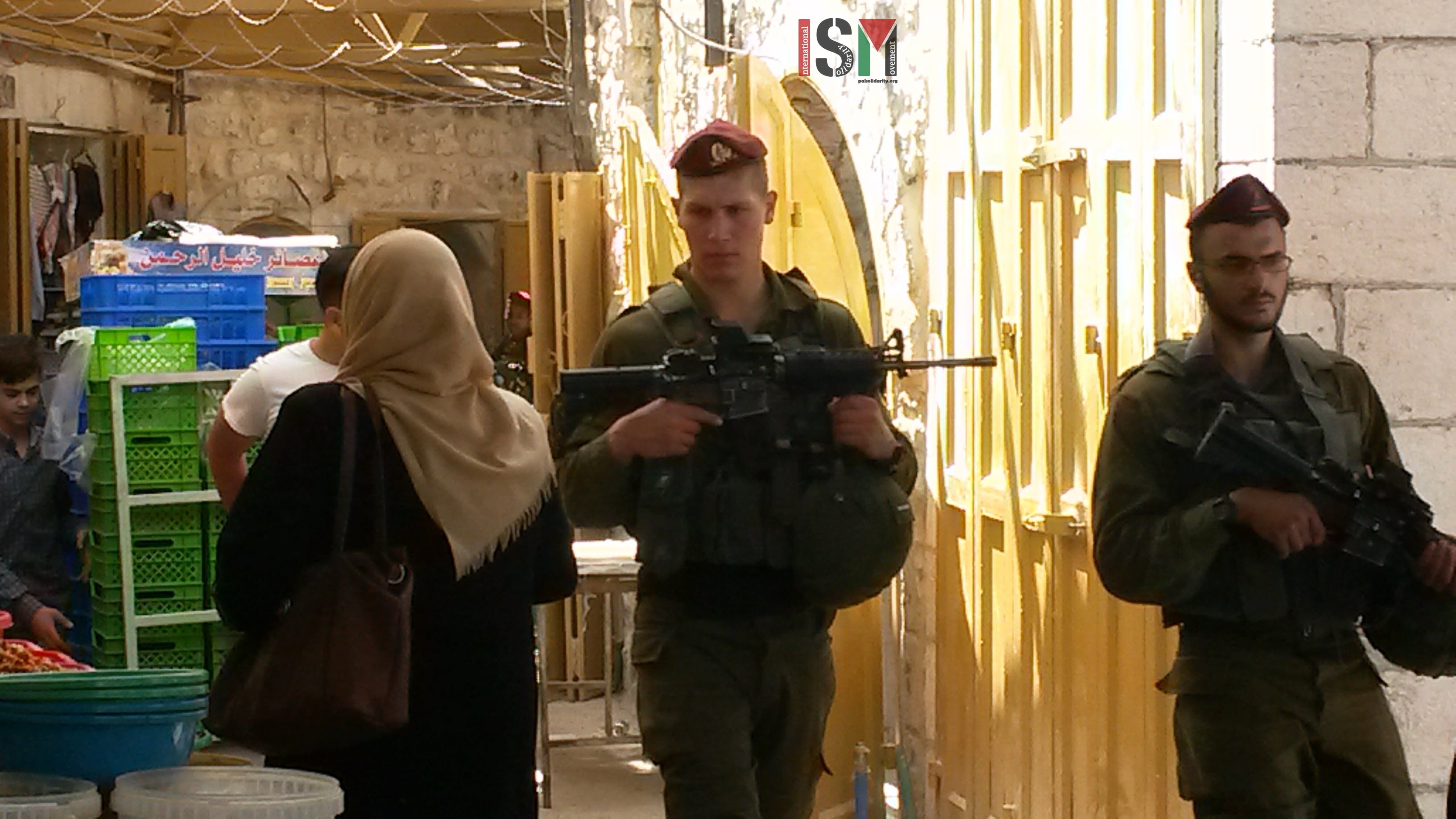Tag: Hebron
-
Settler tourists given weekly armed escort through the streets of Al Khalil
Every Saturday, Zionist settler tours take place in the narrow alleys of the souq in Al Khalil’s (Hebron). These guided tours usually last for about an hour, and settlers are always accompanied by armed Israeli forces, intimidating local Palestinians who are trying to make a living by selling their goods in the market. The tours…
-
Israeli soldiers injure 4 unarmed Palestinians in Al-Khalil protest Monday 14th May
On Monday 14th May at 11am, protesters in occupied Al-Khalil gathered at the Hussein Mosque stadium with placards, and marched down to the city centre, gathering there and taking pictures at around 11.30. Around 80 protesters were present, including children and observers. Some protesters continued on towards Checkpoint 56, which prevents Palestinians from entering Shuhada…



